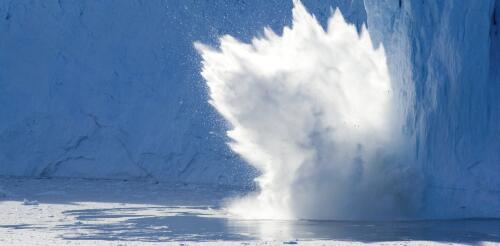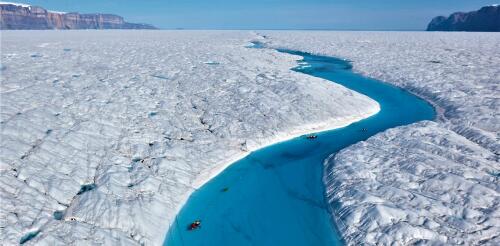Climate models
Superstorms, abrupt climate shifts and New York City frozen in ice. That’s how the blockbuster Hollywood movie “The Day After Tomorrow” depicted an abrupt shutdown of the Atlantic Ocean’s circulation and the catastrophic consequences. While Hollywood’s vision was over the top, the 2004 movie raised a serious question: If global warming shuts down the Atlantic Meridional Overturning Circulation, which is crucial for carrying heat from the tropics to the northern latitudes, how abrupt and severe would the climate changes be? Twenty years after the movie’s release, we know a lot more about the Atlantic Ocean’s circulation. Instruments deployed in the ocean starting in 2004 show that the Atlantic Ocean circulation has observably slowed over the past two decades, possibly to its weakest state in almost a millennium. Studies also suggest that the circulation has reached a dangerous tipping point in the past that sent it into a precipitous, uns...
The islands of Hawaii are world renowned for their generally pleasant and tranquil weather. However, the Aug. 8, 2023, wildfire tragedy on Maui was a stark reminder that Hawaii also can experience drought and hot, dry, windy weather, providing the conditions for destructive fires. Hawaii has seen a generally rising trend in the amount of land that burns each year as the local climate warms. Climate change was one of several contributors to Maui’s wildfire catastrophe, and rising temperatures and associated rainfall changes are expected to increase the islands’ fire risk. These changing weather patterns will also affect Hawaii’s ecosystems and freshwater resources. You can listen to more articles from The Conversation, narrated by Noa, here. I am a meteorologist at the University of Hawaii, and I have worked with colleagues to develop sophisticated computer climate simulations that project local rainfall changes over the 21st century. Our results sug...
I’m striding along the steep bank of a raging white-water torrent, and even though the canyon is only about the width of a highway, the river’s flow is greater than that of London’s Thames. The deafening roar and rumble of the cascading water is incredible – a humbling reminder of the raw power of nature. As I round a corner, I am awestruck at a completely surreal sight: A gaping fissure has opened in the riverbed, and it is swallowing the water in a massive whirlpool, sending up huge spumes of spray. This might sound like a computer-generated scene from a blockbuster action movie – but it’s real. Alun Hubbard stands beside a moulin forming in a meltwater stream on the Greenland ice sheet. Courtesy of Alun Hubbard A moulin is forming right in front of me on the Greenland ice sheet. Only this really shouldn’t be happening here – current scientific unders...
Over the past century, the Earth’s average temperature has swiftly increased by about 1 degree Celsius (1.8 degrees Fahrenheit). The evidence is hard to dispute. It comes from thermometers and other sensors around the world. But what about the thousands of years before the Industrial Revolution, before thermometers, and before humans warmed the climate by releasing heat-trapping carbon dioxide from fossil fuels? Back then, was Earth’s temperature warming or cooling? Even though scientists know more about the most recent 6,000 years than any other multimillennial interval, studies on this long-term global temperature trend have come to contrasting conclusions. To try to resolve the difference, we conducted a comprehensive, global-scale assessment of the existing evidence, including both natural archives, like tree rings and seafloor sediments, and climate models. Our results, published Feb. 15, 2023, suggest ways to improve climate forecasting to avoid missing some...



